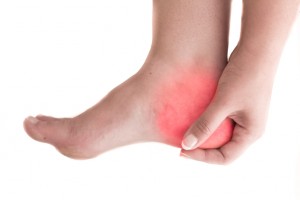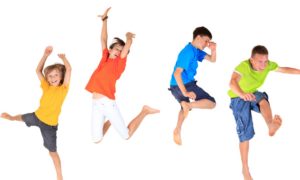Children’s Heel Pain – Sever’s Disease
– Heel pain in kids during sport – what’s causing it? – If your child is getting heel pain during sport – this is for you! – What’s causing your kids
heel pain during sport?

If you’re a parent of a healthy and active child, you’ll know their frustration and disappointment when developing pain in their feet and
legs. As specialists in kids Podiatry, we see it all too often. We hate seeing pain stopping kids from running around with their friends and
playing the sports they love and have been looking forward to for months. So if they haven’t injured their feet, why are they getting pain
their heels? If your child is aged between 8 -14, it’s likely that they have developed
Sever’s
Disease.
Don’t be alarmed – despite its name, Sever’s is a condition as opposed to disease and
will resolve over time. Timely and
appropriate management can help it resolve much faster and get your child back on the field, feeling great. Here’s what you need to know:
What is Sever’s Disease?
Sever’s has often been referred to as ‘growing pains’, though this does not describe how and why the pain occurs. Sever’s is actually the
abnormal tension (pull) on the heel bone and its growth plate in kids. Growth plates are located on the ends of growing bones and will
eventually turn into solid bone when we reach full maturity. As we grow, our bones, muscles and tissues all grow and lengthen too. In
Sever’s, the achilles (which also connects to the calves) hasn’t elongated at the same rate that the heel bone has been growing, the
resulting tension and pull on the back of the heel becomes very painful.
What are the symptoms?
Symptoms typically occur during a period of growth, particularly between 8-14 years and include:
- Pain at the back of the heel that can be sharp or aching
- Pain occurs during (or after) sports or physical activity
- Abnormal tightness through the back of the legs down to the heel
- Swelling at the back of the heel
- Pain that is reduced with rest and ice, but comes back with activity
What can trigger Sever’s pain?
Any additional factors that cause increased strain on the achilles/calves/heels can exacerbate this pain, including:
- Running sports
- Increased physical activity
- Soccer boots and low-heeled shoes
- Tight calf muscles
- Hard surfaces
How do you treat Sever’s?
They key is to not only settle the symptoms but treat the cause, that is, reduce the abnormal pull on the heel from the achilles. After
using rest and ice to reduce the pain if it arises, treatment to eliminate Sever’s pain long-term may include the combination of:
-
Orthotics – to keep the foot in its optimal position so that it minimises the tension placed on the achilles where it
connects to the heel
-
Stretching/strengthening – this will lengthen tight muscles so they can functionally normally with the other bones,
joints and tissues. This also reduces the risk of further injury down the track
-
Footwear check – this ensures that footwear isn’t worsening the foot pain. Even good, supportive shoes may have a low
set heel which will place more tension on the achilles/heel

While Sever’s is a frustrating, painful and upsetting condition, you
don’t need to put up with it or wait months hoping that
it will resolve.
Perform Podiatry are kids foot health experts
Perform Podiatry is proud to be not only one of Auckland’s top Podiatry clinics but also one of the only clinics that specialises in kids
feet. We go above and beyond to ensure that all of our patients receive the best care and outcomes that exceed their expectations. There’s
nothing we love more than seeing kids healthy, happy and doing the things they love without the fear of pain or injury. If you’re worried
about your little ones feet or they’ve developed pain at their heels or anywhere through their feet or legs, give us a call on
09
523 2333 and
see our expert, friendly team!



.jpg)